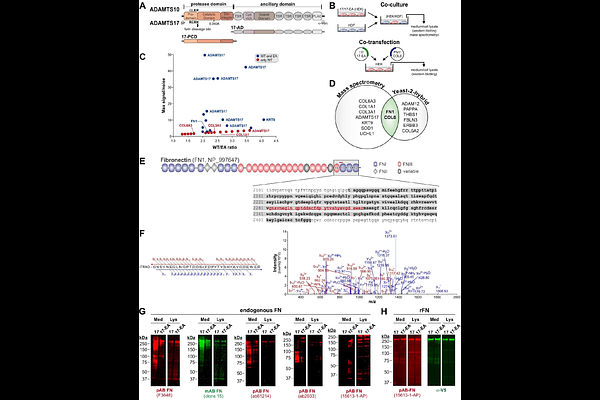Combined ADAMTS10 and ADAMTS17 inactivation exacerbates bone shortening and skin phenotypes

Combined ADAMTS10 and ADAMTS17 inactivation exacerbates bone shortening and skin phenotypes
Taye, N.; Karoulias, S. Z.; Balic, Z.; Wang, L.; Willard, B.; Martin, D.; Richard, D.; Okamoto, A. S.; Capellini, T. D.; Apte, S. S.; Hubmacher, D.
AbstractWeill-Marchesani syndrome (WMS) is characterized by severe short stature, joint contractures, tight skin, heart valve and eye. WMS is caused by recessive mutations in ADAMTS10, ADAMTS17, or LTBP2, or dominant mutations in FBN1. Since bone growth is driven by chondrocyte proliferation and hypertrophy in the growth plates, the genetics of WMS suggests that the affected extracellular matrix (ECM) proteins act within the same pathway to regulate chondrocyte and growth plate function. Here, we show that Adamts10;Adamts17 double knockout (DKO) mice have significant postnatal lethality and exacerbated bone shortening, which correlated with a narrower hypertrophic zone in their growth plates. ADAMTS17 substrates identified by N-terminomics and yeast two-hybrid screening identified the ECM proteins fibronectin and collagen VI (COL6). In primary ADAMTS10- and ADAMTS17-deficient skin fibroblasts fibronectin deposition was impaired concomitant with aberrant intracellular accumulation of fibrillin-1. These findings support a role for ADAMTS17 in ECM protein secretion and assembly. Mechanistically, ADAMTS17 appears to be a critical regulator of ECM protein secretion or pericellular matrix assembly, whereas ADAMTS10 likely modulates ECM formation at later stages.